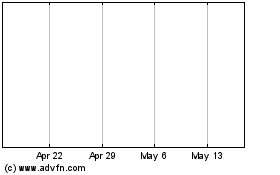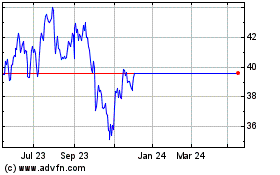- The scale of climate bond issuance in Latin America - $45
billion in absolute terms from 11 countries - is small for the
region relative to the overall size of the global climate bond
market, which now stands at over $1 trillion.
- Individual countries have divergent climate bond policies
and frameworks, causing market fragmentation and creating obstacles
to international investor participation in climate bond
issuances.
- Coordination of policy frameworks and common use proceeds at
a regional level is key to accelerating green bond issuance and
progress towards decarbonisation in Latin America.
Limited policy ambitions and lack of private sector financing
have curtailed faster progress on decarbonisation in Latin America,
according to new research launched today from Janus Henderson
Investors. The Janus Henderson Latin America Decarbonisation Report
analyses decarbonisation efforts across Mexico, Central America and
the Caribbean, and South America against three metrics: renewable
energy as a percentage of total energy mix, climate bond issuance
as a percentage of total bond issuance, and net zero target
dates.
Net zero commitments not translating into use of green
capital market financing instruments
Adherence, at least in principle, to the net zero 2050 goal is
consistent across most of the region’s largest countries and, in
several instances across the region, the natural resource
endowments of countries have been already tapped to generate
renewable power. Further investment in renewable energy capacity
generation is also underway in the region, building on legacy
projects and expanding into new capacity.
Some of the smaller countries in the region – such as Haiti,
Guatemala and Uruguay – produce a significant amount of their
energy from renewables, as the result either of significant
multilateral assistance, or long-term strategic plans meant to
improve economic resilience. Eight out of 43 countries included in
the analysis have not made commitments to net zero by 2050
including Mexico and Venezuela.
However, broad net zero commitments have not yet translated into
significant use of climate-related capital market financing
instruments, such as green bonds. To date, net zero frameworks are
a necessary signal of policy intent, but not yet a sufficient
condition for at-scale financing from financial markets for
decarbonisation initiatives. Only 12 countries out of the 43
included in the analysis have to date issued carbon bonds. Chile
ranks first ($9bn), followed by Brazil ($8.7bn) and Mexico
$3.8bn).
Climate Bond issuance is low relative to the size of the
region
The scale of cumulative climate bond issuance in Latin America
currently stands at $45 billion in absolute terms across 11
countries as of the end of 2021. This is small for the region
relative to the overall size of the global climate bond market,
which now stands at over $1 trillion.
Limited issuance in Latin America has been driven by a lack of
leadership issuance from the sovereign borrowers in the region,
which hinders broader adoption of the climate bonds from corporate
issuers. Only Chile stands out as a consistent sovereign green bond
issuer to date (although countries like Mexico and Ecuador have
issued related, sovereign sustainability bonds.) Equally, although
several large-scale projects are now underway in countries like
Chile and Colombia, and more are coming online, the investable
project pool remains limited relative to other regions of the
world, particularly in Asia.
Conflicting policies leads to market fragmentation
Better financing mechanisms could be available if more
climate-related bond issuance enabled countries in Latin America to
use the capital markets and help bridge the financing gap. Policy
action is required as a supporting and enabling mechanism but,
currently individual markets have divergent climate bond policies
and frameworks. This results in market fragmentation, liquidity
constraints, and creates obstacles to international investor
participation in climate bond issuances. Governments across Latin
America have a clear role to play in the energy transition and
should create a unified framework and strategy to attract
investment into green projects.
Janus Henderson calls for coordinated green policy framework
across governments in Latin America
Janus Henderson Investors is advocating for a coordinated
response. Convergent and consistent rules and regulations set by
governments, on issues from technical standards to regulations of
carbon intensive activities, would act as a catalyst for more rapid
decarbonisation at a pan-regional level. It would also increase
success of 2050 net zero commitments and accelerate the issuance of
green bonds, tapping into the growing pool of dedicated assets with
an explicit mandate to investment in a manner consistent with
sustainability principles and climate focused investments.
Paul LaCoursiere, Global Head of ESG Investments at Janus
Henderson, said: “A coordinated response to green financing at
a pan-regional level would be a truly transformational solution to
attracting green finance to Latin America. While some markets have
clear and ambitious policy frameworks and substantial use of
capital markets financing to accelerate the transition to renewable
energy generation, there is still a long way to go towards meeting
net zero ambitions across the region. A collection of countries
committing to issue green bonds – both sovereign and corporate –
under common use of proceeds protocols, for example, would result
in deeper liquidity pools and attract a wider international
investment base. Coordinated, consistent frameworks would be more
likely, in our view, to encourage domestic capital formation and
attract foreign investment supporting decarbonisation across the
region.”
Jennifer James, Emerging Market Debt Portfolio Manager,
said: As countries seek to migrate to more sustainable
infrastructures, issuing green bonds is a natural source of
funding. For their part, investors have whole-heartedly embraced
labelled bonds, owing to structural shifts in how ESG plays a role
in investing. This combination, where supply and demand meet
effortlessly, should be a strong tailwind for further growth in
green bond issuance. In 2022, Chile was the first Latin American
country to issue sustainable bonds and did so against a backdrop of
strong investor demand. We thought the bonds were competitively
priced and served a good purpose, and we would expect other
countries to follow on the back of this success. Latin American
countries have a lot of potential for sustainability-linked
endeavours, which is an exciting trend for the growth of the green
bond market.”
ENDS
Data Sources
The report analysed data from 43 countries across Mexico,
Central America and the Caribbean, and South America. Countries
where data is not available were not included in the analysis.
Top 5 countries with highest renewable as percentage of Total
Energy Final Consumption
Country
TEFC%
Haiti
76.2
Guatemala
64.1
Uruguay
60.7
Paraguay
59.2
Honduras
50.1
Renewable energy as a percentage of total energy mix (TECF)
source: IRENA,
https://www.irena.org/Statistics/Statistical-Profiles
Climate Bond issuance, unweighted
Country
Climate bond issuance ($m)
*
Chile
9000
Brazil
8700
Mexico
3800
Argentina
735
Colombia
684
Costa Rica
504
Panama
380
Uruguay
361
Ecuador
150
Barbados
9
Peru
1.1
Dominica
0.3
Climate Bond Issuance Source: *Climate Bond Initiative,
https://www.climatebonds.net/market/data/#country-map
About Janus Henderson
Janus Henderson Group is a leading global active asset manager
dedicated to helping investors achieve long-term financial goals
through a broad range of investment solutions, including equities,
fixed income, quantitative equities, multi-asset and alternative
asset class strategies.
At 31 December 2021, Janus Henderson had approximately US$432
billion in assets under management, more than 2,000 employees, and
offices in 25 cities worldwide. Headquartered in London, the
company is listed on the New York Stock Exchange (NYSE) and the
Australian Securities Exchange (ASX).
Source: Janus Henderson Group plc
This press release is solely for the use of members of the
media and should not be relied upon by personal investors,
financial advisers or institutional investors. We may record
telephone calls for our mutual protection, to improve customer
service and for regulatory record keeping purposes.
Issued by Janus Henderson Investors. Janus Henderson Investors
is the name under which investment products and services are
provided by Janus Capital International Limited (reg no. 3594615),
Henderson Global Investors Limited (reg. no. 906355), Henderson
Investment Funds Limited (reg. no. 2678531), Henderson Equity
Partners Limited (reg. no.2606646), (each registered in England and
Wales at 201 Bishopsgate, London EC2M 3AE and regulated by the
Financial Conduct Authority) and Henderson Management S.A. (reg no.
B22848 at 2 Rue de Bitbourg, L-1273, Luxembourg and regulated by
the Commission de Surveillance du Secteur Financier). Henderson
Secretarial Services Limited (incorporated and registered in
England and Wales, registered no. 1471624, registered office 201
Bishopsgate, London EC2M 3AE) is the name under which company
secretarial services are provided. All these companies are wholly
owned subsidiaries of Janus Henderson Group plc. (incorporated and
registered in Jersey, registered no. 101484, with registered office
at 13 Castle Street, St Helier, Jersey, JE1 1ES).
[Janus Henderson, Janus, Henderson, Intech, VelocityShares,
Knowledge Shared, Knowledge. Shared and Knowledge Labs] are
trademarks of Janus Henderson Group plc or one of its subsidiaries.
© Janus Henderson Group plc.
D10035
View source
version on businesswire.com: https://www.businesswire.com/news/home/20220209005279/en/
Press Enquiries Janus Henderson Investors Stephen Sobey
Head of Media Relations T: +44 (0) 2078182523 E:
Stephen.sobey@janushenderson.com
Janus Henderson (ASX:JHG)
Historical Stock Chart
From Feb 2025 to Mar 2025

Janus Henderson (ASX:JHG)
Historical Stock Chart
From Mar 2024 to Mar 2025
